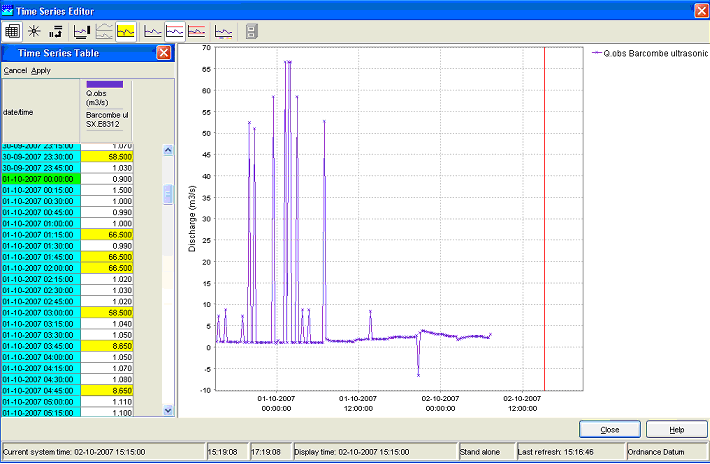Example on how to validate series using the Rate of Rise and Temporary shift validation rules. The graph below shows the original series with peaks that need to be flagged as unreliable.
At the moment nothing is validated, but we want to get rid of the peaks. Problem is that a rate of Rise only will not solve the problem. If we add a rate of change of 5 m3/s per 15 minute time interval.
This is the result. Most of the peaks are flagged as unreliable, there is a problem when a peak consists of two values.
As you can see the first unreliable is correctly detected, the second value also, but the third 66.5 value is reliable. This makes the value after the reliable value unreliable.
When we change the Rate of change into a Temporary shift check, the result is as follows. The temporary shift is configured such that if there is shift of more than 5 m3/s with a period smaller than 1 hour (3600 seconds), the values are unreliable.
Be aware that a shift is detected as a complete rise and fall (or fall and rise). If your last observed value is more than 5 m3/s higher than the previous value, the value is not flagged as unreliable.
Only when the last value is again shifted down, the shift is detected as an unreliable shift.
Also, the shift must be smaller than the period defined in the validation rule, in this case a shift of 1 hour. If the shift is more than 1 hour long, the data are reliable.







